
Sunflowers had a special meaning for the master. He wrote two series of paintings with them: Parisian and Arles. Then the painter made several versions of these works. All of them still cause discussion in the circles of art critics and have become a kind of “brand”.
“Sunflowers” by Van Gogh have the same significance in his work, as “La Gioconda” for Leonardo, “Sistine Madonna” for Raphael, “Black Square” for Malevich. These paintings in a sense are “synonyms” for artists. The Arles cycle, which includes the London painting, was intended to decorate the room of the friend of the painter, Paul Gauguin, in the so-called Yellow House in Arles, in the south of France, which Van Gogh rented.
Both artists worked there together in October-December 1888. In the work on the cycles, Van Gogh applied a special technique of writing – impasto. Its essence lies in the fact that the paints are applied very densely and not only the traditional brushes but also the knife are used. This created a special rough surface, a relief pattern. “Sunflowers” more than once copied, often succeeding in technical terms, but never – in “personal”.
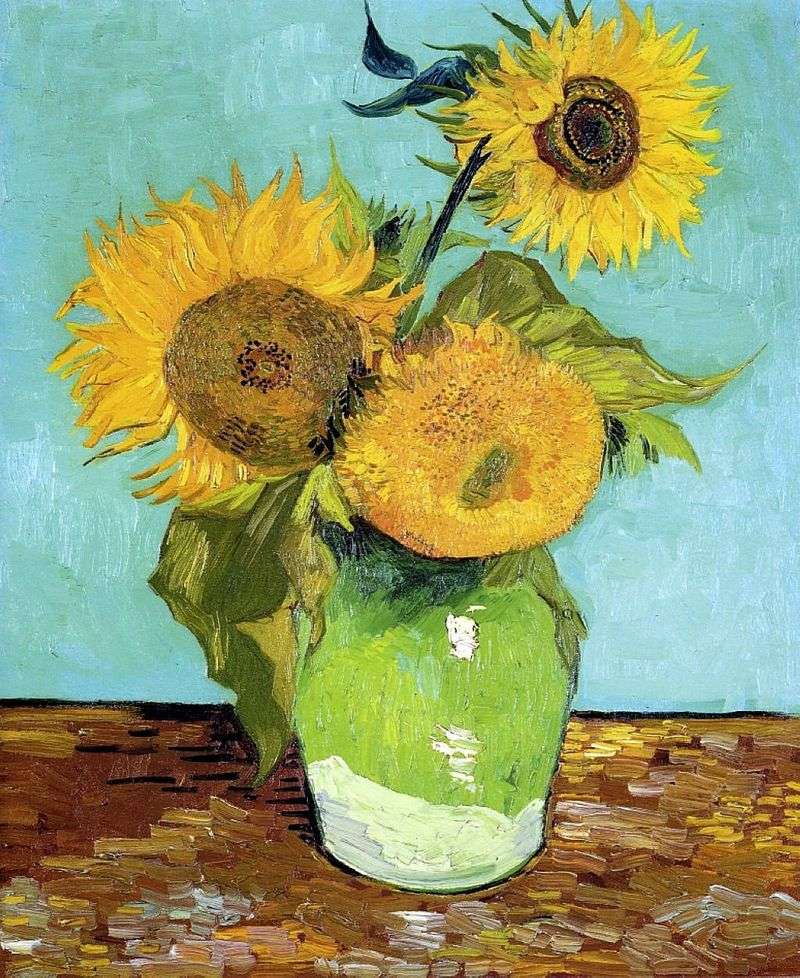 Three sunflowers in a vase by Vincent Van Gogh
Three sunflowers in a vase by Vincent Van Gogh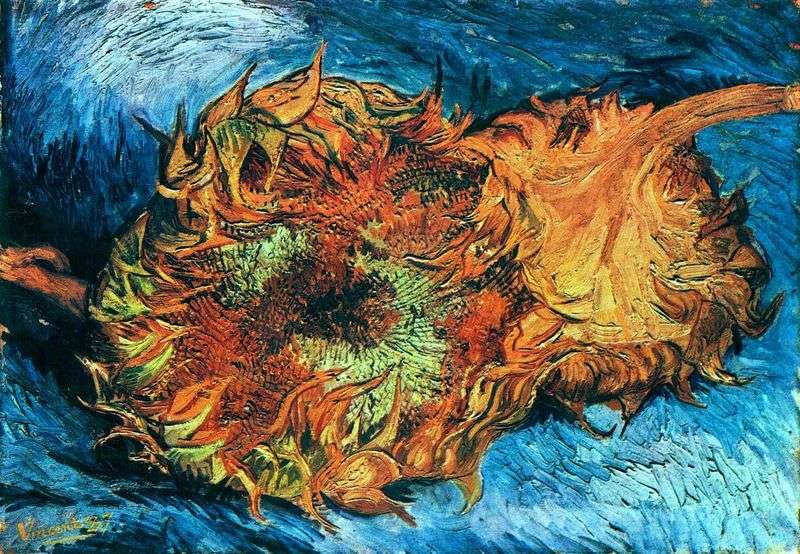 Sunflowers. Two cut sunflowers by Vincent Van Gogh
Sunflowers. Two cut sunflowers by Vincent Van Gogh Sunflowers by Vincent Van Gogh
Sunflowers by Vincent Van Gogh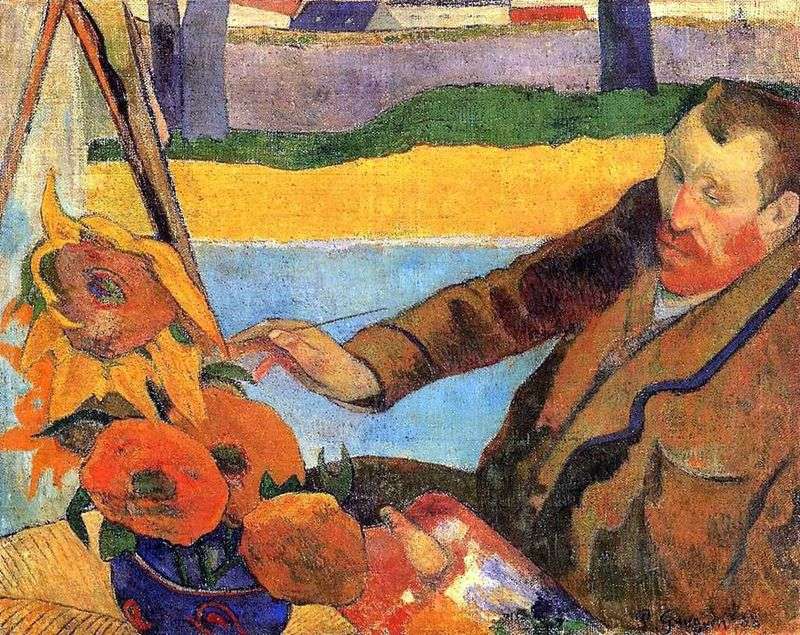 Van Gogh paints sunflowers (Portrait of Vincent Van Gogh) by Paul Gauguin
Van Gogh paints sunflowers (Portrait of Vincent Van Gogh) by Paul Gauguin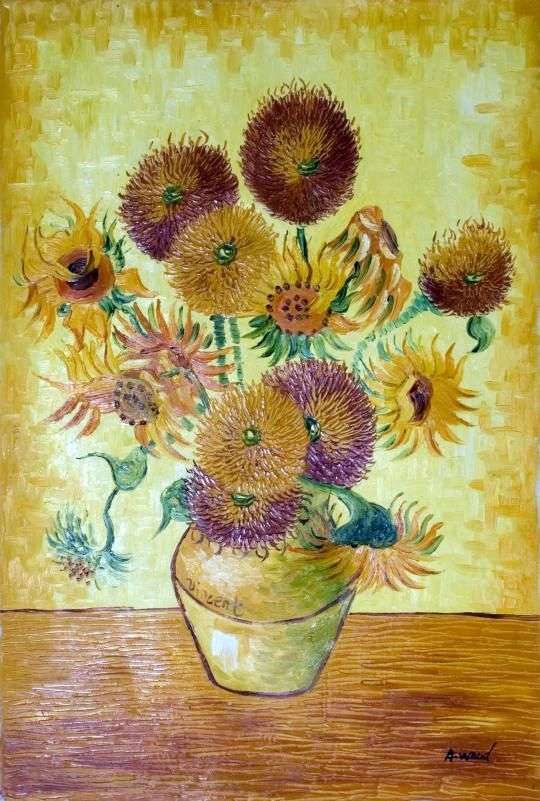 Sunflowers. August by Vincent Van Gogh
Sunflowers. August by Vincent Van Gogh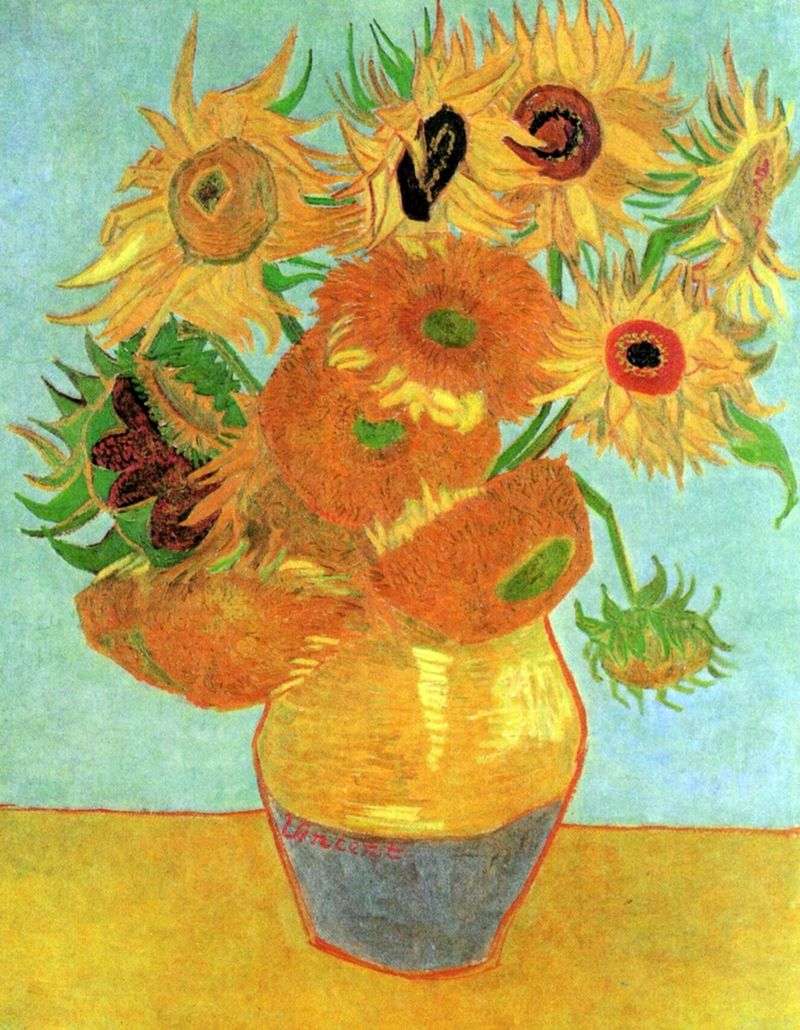 Vase with twelve sunflowers by Vincent Van Gogh
Vase with twelve sunflowers by Vincent Van Gogh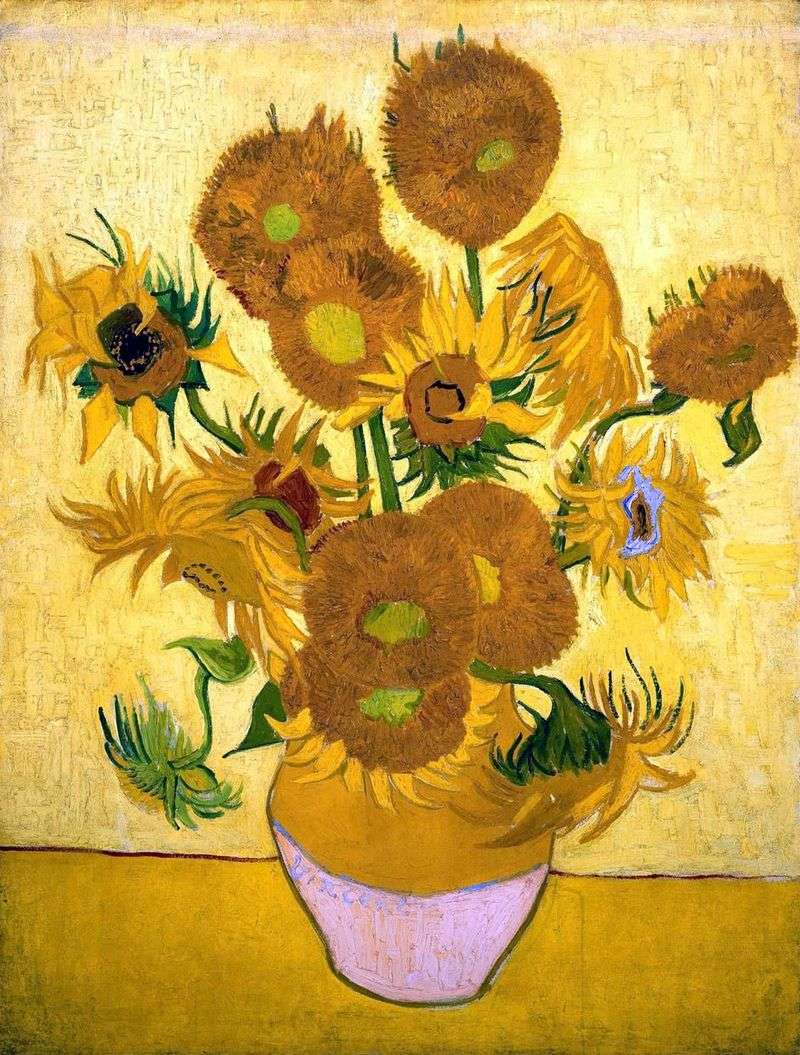 Still Life: Fifteen Sunflowers in a Vase by Vincent Van Gogh
Still Life: Fifteen Sunflowers in a Vase by Vincent Van Gogh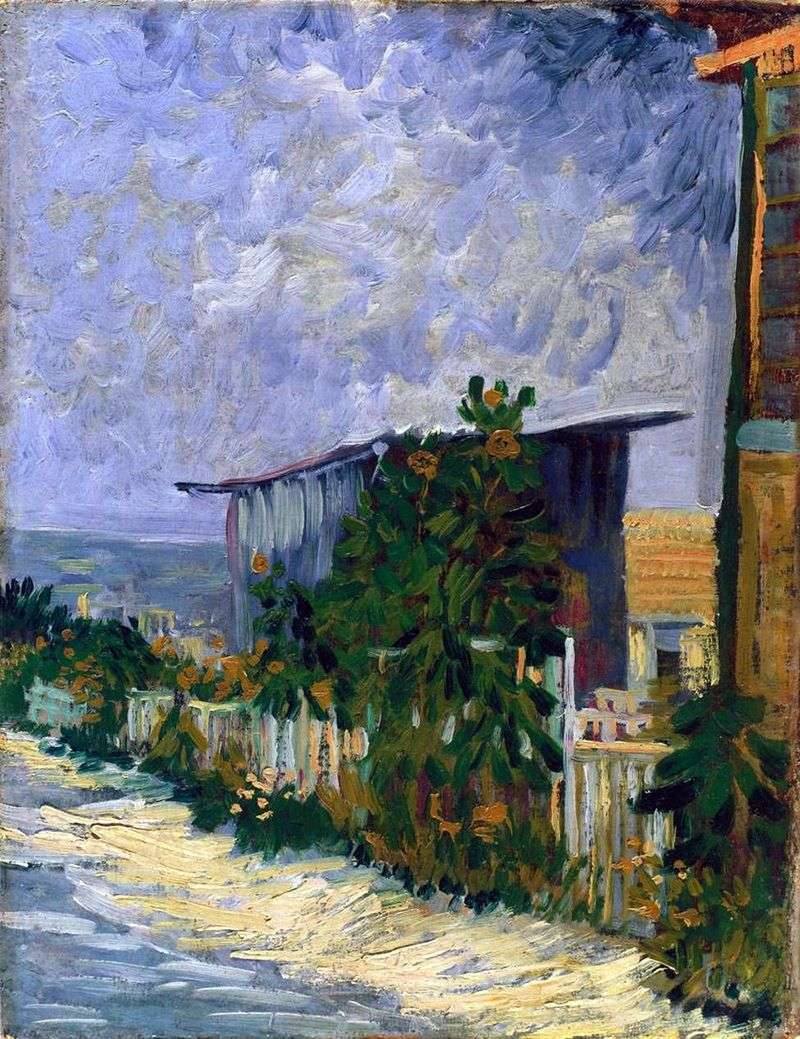 Montmartre, road with sunflowers by Vincent van Gogh
Montmartre, road with sunflowers by Vincent van Gogh